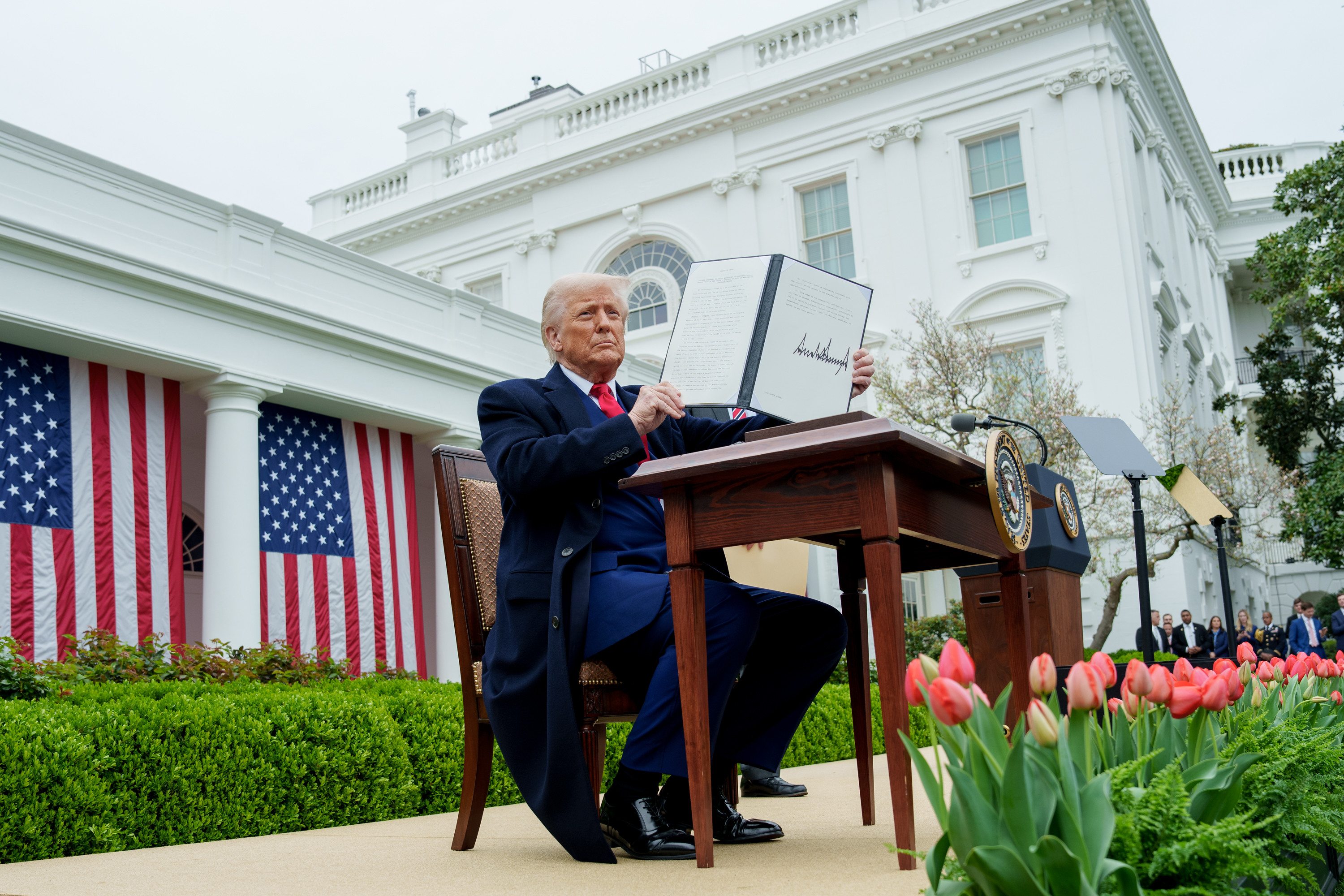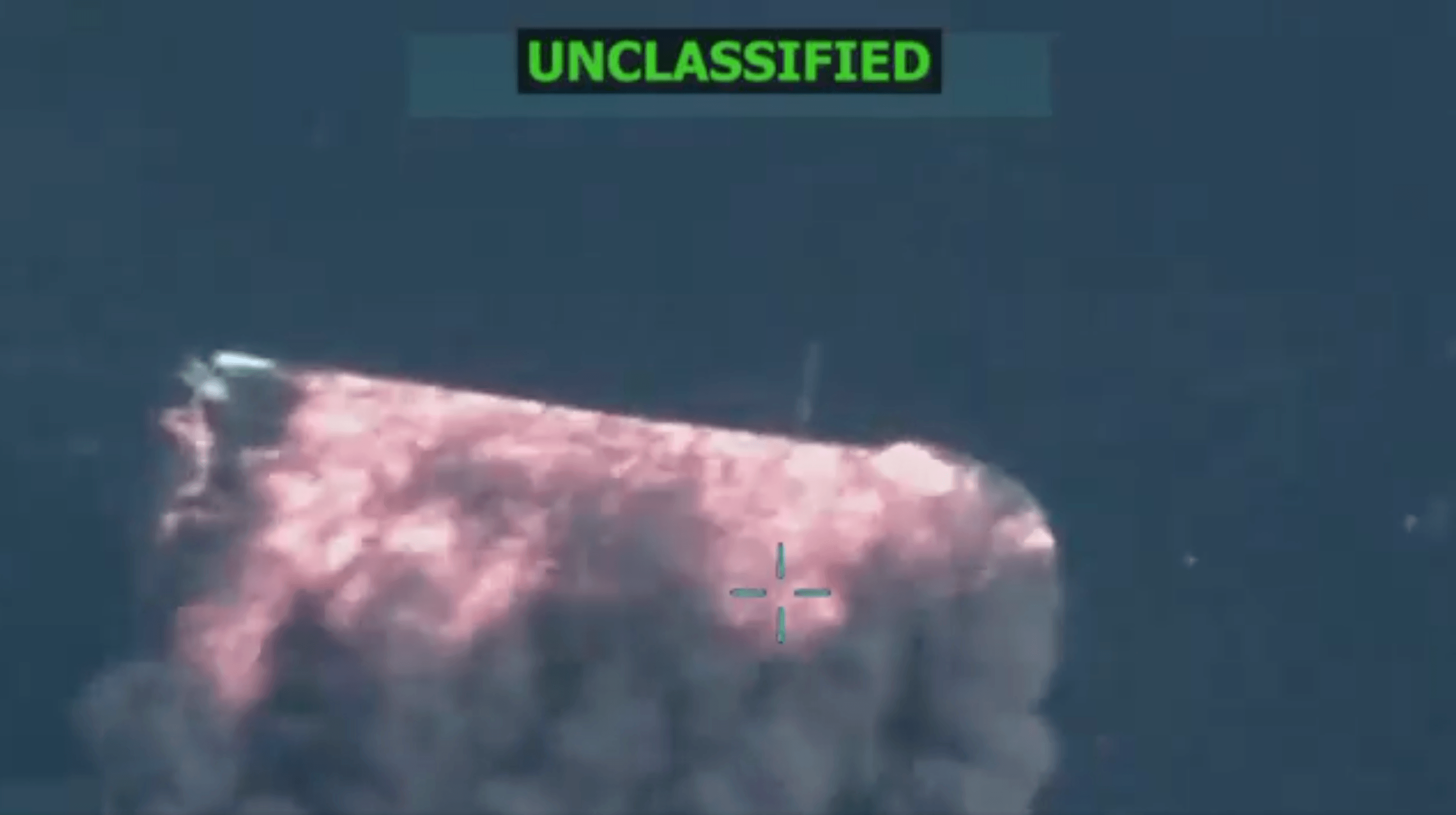ATS, RIP?
By now, most Lawfare readers will be aware of the issues before the Supreme Court in Jesner v. Arab Bank, which was decided yesterday. The plaintiffs/petitioners—foreign victims of overseas terrorist attacks—brought suit against the Arab Bank, a major Jordanian financial institution, for allegedly providing financial support and services to terrorists and terrorist organizations responsible for the attacks.

Published by The Lawfare Institute
in Cooperation With

By now, most Lawfare readers will be aware of the issues before the Supreme Court in Jesner v. Arab Bank, which was decided yesterday. The plaintiffs/petitioners—foreign victims of overseas terrorist attacks—brought suit against the Arab Bank, a major Jordanian financial institution, for allegedly providing financial support and services to terrorists and terrorist organizations responsible for the attacks. The legal question was whether corporations and other entities that are not natural persons can be named as defendants in civil suits brought under the Alien Tort Statute (ATS), a provision in the 1789 Judiciary Act that provides federal jurisdiction over common law causes of action for “tort[s] … in violation of the law of nations.” The Court ruled by a 5-4 majority, in an opinion authored by Justice Anthony Kennedy, that ATS jurisdiction does not extend to suits against foreign corporations.
Jack Goldsmith summed up the Court’s decision in six letters on Twitter:
ATS, RIP. https://t.co/Dn6gGFZdYh
— Jack Goldsmith (@jacklgoldsmith) April 24, 2018
Like Goldsmith, I come to the Jesner decision having previously written about various aspects of ATS litigation (including a 2008 article on choice of law under the ATS and a later exploration of transitory torts, as well as shorter contributions on functional, political, and economic aspects of ATS cases, and cases alleging complicity). While some might view the sheer volume of scholarship on ATS-related issues as excessive in proportion to the statute’s practical significance, the ATS has provided a prism through which to examine and debate questions about the relationship between customary international law and U.S. law, the respective roles of the judicial and political branches, and the adjudicatory reach of U.S. courts. Courts have engaged in this conversation in piecemeal fashion since the 1980s, leaving many questions unresolved along the way.
In a 2010 blog post that presaged Goldsmith’s tweet about Jesner, I wrote in response to the U.S. Court of Appeals for the Second Circuit’s decision in Kiobel v. Royal Dutch Petroleum—which excluded corporate liability under the ATS—that the ATS was “not dead yet.” I concluded that post with the following thoughts:
Looking at the big picture, there certainly need to be—and are—robust mechanisms to contain cases that are non-meritorious or vexatious, that impinge excessively on the Executive’s conduct of foreign relations, or that should be heard in a non-U.S. forum that is willing and able to provide redress. At the front end, I would hazard that, although the increasing involvement of plaintiffs’ law firms (as opposed to human rights lawyers associated with non-profits, or attorneys working strictly pro bono) in bringing ATS cases may have some benefits in terms of reaching a greater swath of deleterious conduct, it may foster less coherence and restraint in case selection. At the back end, certain judges may be tempted to overcompensate by creating doctrinal barriers to entire categories of cases. This impulse might be understandable, but it does not justify judicial rewriting of the ATS.
The Supreme Court found in Sosa v. Alvarez-Machain (2004) that only violations of sufficiently specific, universal, and obligatory international law norms may be actionable under the ATS. In Kiobel v. Royal Dutch Petroleum Co. (2013), the court limited the geographic scope of the ATS by applying a version of the presumption against extraterritoriality to ATS causes of action. Unlike these two prior opinions, which leave some room for interpretation, Jesner erects a doctrinal barrier to an entire category of ATS cases.
Justice David Souter’s opinion for the majority in Sosa characterized the ATS as “strictly jurisdictional,” which in contemporary terms would ordinarily mean that another source of law needs to supply a cause of action in order for courts to adjudicate a claim. The contemporary understanding derives from the Supreme Court’s reasoning in Erie Railroad Co. v. Tompkins (1938), which the Sosa court identified as a “watershed” in “rethinking the role of federal courts in making” common law. Against this backdrop, the Sosa majority, which included Kennedy, reasoned that “the First Congress did not pass the ATS as a jurisdictional convenience to be placed on the shelf for use by a future Congress or state legislature that might, some day, authorize the creation of causes of action or itself decide to make some element of the law of nations actionable for the benefit of foreigners.” It therefore understood the ATS as providing jurisdiction over a narrow class of potential federal common-law claims for violations of the law of nations without further congressional action on the basis that “it would be unreasonable to assume that the First Congress would have expected federal courts to lose all capacity to recognize enforceable international norms simply because the common law might lose some metaphysical cachet on the road to modern realism.” The majority in Kiobel further narrowed the class of potential claims when it found insufficient historical support for the proposition that “Congress also intended federal common law under the ATS to provide a cause of action for conduct occurring in the territory of a foreign sovereign,” and limited ATS claims to those that “touch and concern the territory of the United States … with sufficient force to displace the presumption against extraterritorial application” of U.S. statutes that lack a “clear indication” of extraterritorial application.
In Jesner, Kennedy emphasizes that the Supreme Court has been increasingly reluctant (to say the least) “to extend judicially created private rights of action.” The idea that Bivens v. Six Unknown Named Agents might offer a path for judicial remedies for unlawful conduct has largely been eviscerated, with Kennedy’s opinion for the court in Ziglar v. Abbasi indicating that it is for Congress, not the courts, to determine “if the public interest would be served by imposing a new substantive legal liability.” Framing the ATS as an exercise in judicial creation of “a new substantive legal liability” in Jesner, rather than the translation and reconciliation of a 1789 statute with post-Erie understandings of federal common law (as Sosa attempted to do), basically determines the outcome of the inquiry. By starting from a presumption of non-liability, Kennedy finds that the ATS does not support “an exception to these general principles in this context,” based primarily on separation-of-powers concerns.
The United States had taken the position in Jesner that, as a legal matter, corporate liability is not categorically foreclosed under the ATS, but that “[i]n the context of the ATS … the automated domestic clearance of dollar-denominated transactions in isolation does not in itself constitute a sufficient domestic nexus for recognizing a common-law claim.” Because the plaintiffs/petitioners had “made other allegations that might affect the extraterritoriality inquiry in this case,” the United States argued in favor of remand to the Second Circuit to determine whether the domestic nexus was, in fact, sufficient to support ATS jurisdiction under Kiobel.
Kennedy appears to have taken very seriously Jordan’s claim as amicus, represented by former Acting Solicitor General Neal Katyal, that the suit against the Arab Bank was an affront to Jordan’s “sovereignty.” (The bank, represented in the Supreme Court by former Solicitor General Paul Clement, previously settled similar claims by U.S. victims under the Anti-Terrorism Act; the ATS claims at issue in Jesner were brought by foreign victims of the same attacks.) This concern might have made it easier for the plurality to punt on the choice of law question at the heart of this case: namely, whether international law or federal common law governs whether corporations can be sued under the ATS. (Part II-A of Kennedy’s opinion, joined by Chief Justice John Roberts and Justice Clarence Thomas, strongly suggests that international law itself must provide for corporate liability, but indicates that “the Court need not resolve” that question.) Although international law indisputably provides the substantive standards of conduct whose alleged violation can form the basis for an ATS suit, the Second Circuit parted company with other circuits in finding that international, rather than domestic, law must also provide a civil cause of action against corporations for the conduct of their agents. Rather than definitively endorsing the Second Circuit’s tenuous approach, Kennedy finds “sufficient doubt on the point” to pass the entire issue to Congress (for reasons he elaborates on behalf of the majority in Part II-B-1).
Absent further congressional guidance on the reach of the ATS, Kennedy looked in Part II-B-2 (joined by the chief justice and Thomas) to the much more recently enacted Torture Victim Protection Act (TVPA), which the Supreme Court previously interpreted as providing a cause of action only against natural persons. Kennedy appears to have reassured himself in Part II-B-3 (joined again by the chief justice and Thomas) that “the ATS will seldom be the only way for plaintiffs to hold the perpetrators liable,” in part because “plaintiffs can still sue the individual corporate employees responsible for a violation of international law under the ATS”—both doubtful propositions for a variety of reasons. His observations on alternative paths to recovery correspond to the third prong of what I’ve previously called “The Three C’s of Jurisdiction Over Human Rights Claims in U.S. Courts”--that is, consensus, connection, and complementarity-- whereby “a claim presenting a very high degree of substantive consensus on the applicable conduct-regulating rule, a connection to the forum sufficient for personal jurisdiction purposes, and little chance of meaningful recovery abroad would be suitable for adjudication in U.S. courts.” By gesturing towards statutes that criminalize genocide and allow civil remedies for slavery, Kennedy’s opinion fails to grapple with the fact that most individual defendants remain beyond the jurisdictional reach of U.S. courts, and that the evidence and resources required for criminally prosecuting international law violations are often unavailable (prompting recourse to civil suits and immigration consequences such as removal, as illustrated by the recent federal prosecution of Liberian warlord “Jungle Jabbah” for immigration fraud rather than war crimes). One doesn’t necessarily need to endorse expansive readings of the ATS to fill this accountability gap, but Kennedy’s opinion should have grappled more honestly with the likely consequences of narrowing the ATS’s scope.
Dissenting in Jesner, Justice Sonia Sotomayor--joined by Justices Ruth Ginsburg, Stephen Breyer, and Elena Kagan-- would have found that “[n]othing about the corporate form in itself raises foreign-policy concerns that require the Court, as a matter of common-law discretion, to immunize all foreign corporations from liability under the ATS,” and that “[n]othing about the historical background against which the ATS was enacted rebuts the presumption that the statute incorporated the accepted principle of corporate liability for tortious conduct.” Kennedy was always expected to be the swing vote on this issue, which was “kicked down the road” by the Court’s decision in Kiobel to stay silent on corporate liability and opine instead on extraterritoriality (the parameters of which it declined to specify further in Jesner). Given that the court (and, presumably, Kennedy) was not prepared to rule on the corporate liability question in Kiobel, one wonders what it is about the Jesner case or intervening developments that convinced him to reject foreign corporate liability as a categorical matter. Perhaps the votes in Jesner might have lined up differently had the defendant not been a corporation whose market capitalization, according to Jordan’s amicus brief, “accounts for between one-fifth and one-third of the total market capitalization of the Amman Stock Exchange,” and whose impaired financial health would be, in Jordan’s account, “profoundly destabilizing.” The dissent took the view that “[e]ach source of the diplomatic friction that respondent Arab Bank and the plurality identify can be addressed with a tool more tailored to the source of the problem than a blanket ban on corporate liability,” but Kennedy appears to have been insufficiently reassured by the availability of such tools.
Justice Neil Gorsuch, true to form, wrote a concurring opinion revisiting the court’s reasoning in Sosa, as he had foreshadowed during oral argument when he veered off into issues already addressed in that case. (At the time, Ginsburg cut in dryly, “Isn’t that what this Court [already] said?”). Given the court’s slow pace in issuing decisions this term, members of the Court might consider whether separate opinions on questions not presented for review “account for proper limits on the judicial function” (Gorsuch, J., concurring), or whether there is room in certain cases for greater cooperation and self-restraint.
So, is this the end of the ATS era? Claimants are quick to point out that U.S. corporate liability technically remains untouched by this decision. Justice Samuel Alito notes explicitly in his concurrence that “we have no need to reach the question” of U.S. corporate liability and that, in any event, diversity jurisdiction would supply federal courts with the ability to hear claims against a U.S. corporation (although the substantive law to be applied could presumably vary depending on the jurisdictional basis for the suit). Claims against individual human rights violators also remain untouched by this decision. Although the Jesner majority notes that claims for torture and extrajudicial killing can now be brought under the TVPA (which had not yet been enacted at the time of the Second Circuit’s iconic decision in Filartiga v. Pena-Irala), there might be other conduct that satisfies the Sosa threshold of specificity and universal acceptance (such as genocide), and in which the claim “touches and concerns” the United States under Kiobel (such as where the United States is effectively serving as a “safe haven,” as in Filartiga), that federal courts still deem appropriate for resolution in a U.S. forum.
One could also imagine a renewed emphasis on naming individual corporate employees as defendants, as Jesner appears to invite, but the evidentiary, jurisdictional, and mens rea requirements for establishing individual liability are likely to be more difficult to satisfy in the typical corporate context. To the extent that ATS (and TVPA) cases continue to seek civil redress against individuals who acted on behalf of foreign governments, we are also likely to see continued development of the federal common law of foreign official immunity, which John Bellinger, Ingrid Wuerth, and I have also written about extensively. This is yet another area in which federal courts have been forced to identify and develop governing legal principles absent express Congressional intervention, which we do not appear likely to see anytime soon.





